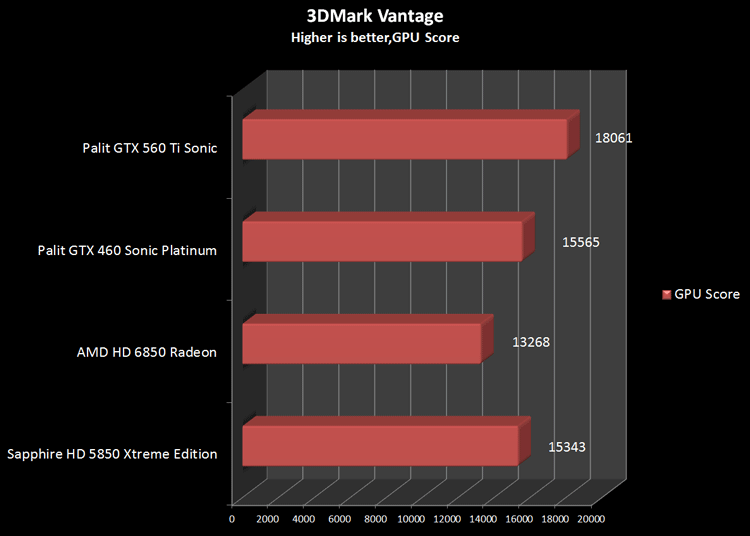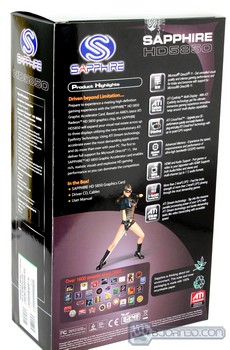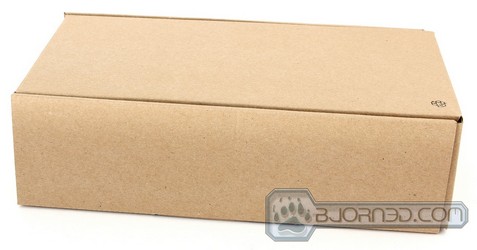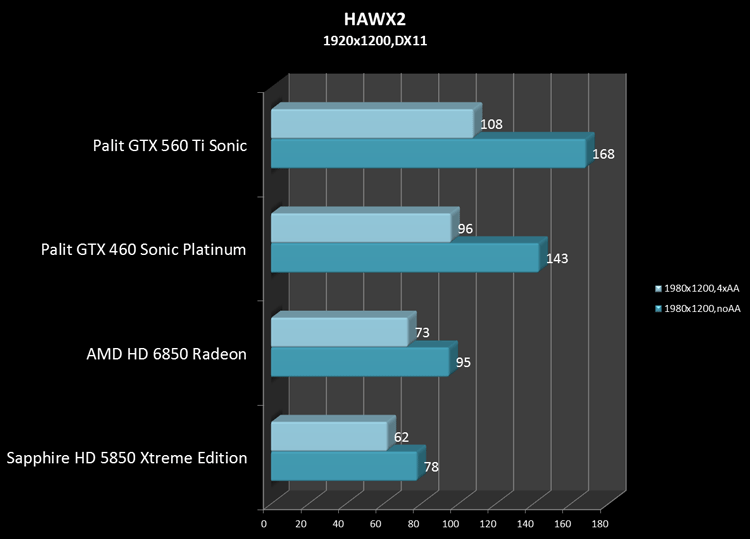The Sapphire HD5850 Xtreme Edition is a great reboot of a very successful card. With a low price tag, it looks attractive for buyers, but can it keep up with newer cards? Keep reading to find out.
introduction
Originally released in 2009, the AMD HD58xx series graphics card quickly gained popularity due to their ability to fully support DX 11, providing a completely new level of tessellation. Released in October of 2009, the HD5850 filled the lower end of the performance slot and was able to deliver great performance for its price. Originally, the HD5850 was oriented towards users who wanted that extra punch, but didn’t feel the need to go overboard with their graphics. However, for those that wish to take full advantage of the HD5850, CrossFire is available, and considering the low price of the graphics card, this should be easily accessible.

With the great success of the 5850, vendors like Sapphire have decided to release an extreme and more powerful version, in order to keep up with the changes that occured in the gaming industry over the past year. Today, Sapphire announced the release of 5850 Extreme graphics card, priced at $150 USD, though it can be bought for as low as $150 USD on Newegg.com. The card is equiped with 1440 stream processors, 72 texture units, as well as support for up to 1 GB of GDDR5 Memory at a bandwidth of 150 GB/s.
While the release of older graphics cards like the HD5850 might seem redundant to some, the higher price-to-performance ratio of the newer HD6850 might make some buyers lean towards older cards. The price difference is especially apparent for those that wish to use the 5850 in CrossFire: HD5850’s in CrossFire are roughly $35-50 cheaper. While the benefits of purchasing the 5850 have been clearly outlined, let us take a closer look and see if this card is in fact worth the price.
Features
1. Microsoft DirectX 11 Support
2. ATI Eyefinity Technology, support up to 3 displays. *
3. ATI Stream technology**
4. Microsoft Windows 7 Support
5. 40nm Process Technology
6. Digital Power Design
7. TriXX Support
8. 2nd Generation TeraScale Engine
9. PCI Express 2.0 x16 bus interface
10. Advanced 1GB/256-bit GDDR5 memory interface
11. HDMI 1.3 support with Deep Color and 7.1 High Bit rate Audio
12. On chip HDCP Support
13. ATI CrossFireX™ multi-GPU support for highly scalable performance. (Use up to four discrete cards with an AMD 790FX based motherboard)
14. ATI Avivo HD Support
- ATI Unified Video Decoder 2 (UVD) for Blu-ray™ and HD Video.
- Accelerated Video Transcoding (AVT)
- DVD Upscaling
- Dynamic Contrast
- Built-in HDMI with 7.1 surround sound support
15. Dynamic power management with ATI PowerPlay™ technology including memory clocks
16. Dolby® TrueHD and DTSHD Master Audio TM Support
Specifications
Operating System Support
Windows XP(32Bit/64Bit); Windows Vista(32Bit/64Bit); Windows Media Center Edition 2005, Windows 7
System Requirements:
-PCI Express® based PC is required with one X16 lane graphics slot available on the motherboard
-500 Watt or greater power supply with two 75W 6-pin PCI Express® power connectors recommended (600 Watt and four 6-pin connectors for ATI CrossFireX™technology in dual mode)
-Certified power supplies are recommended. Refer to http://ati.amd.com/certifiedPSU for a list of Certified products
-Minimum 1GB of system memory
-Installation software requires CD-ROM drive
-DVD playback requires DVD drive
-Blu-ray™playback requires Blu-ray drive
-For an ATI CrossFireX™system, a second ATI Radeon™HD 5850 graphics card, an ATI CrossFireX Ready motherboard and one ATI CrossFireX Bridge Interconnect cable per graphics card (not included) are required
Maximum Display Resolution:
- D-Dub(VGA): 2048 x 1536 @85 Hz.
- DL-DVI-I: 2560 x 1600@60Hz
- HDMI:1080P
- Display Port: 2560 x 1600@60Hz
- Eyefinity: 5760 x 1200@60Hz*
Pictures & Impressions
The Sapphire HD 5850 Xtreme Edition comes in well-designed packaging. The overall color scheme is nicely chosen to appeal to the eye. The front cover clearly states the name of the product, vendor and some of the features that the card provides. The packaging uses the same avatar on front and back to support the theme. The back of the packaging expands more on the features and compatibility of the product as well as lists some of the accolades that this card has been awarded in the past.
Beneath the packaging lies the cardboard cover, which is meant to protect the card from any mechanical damage that could possibly occur during transportation. The card is wrapped in an antistatic bag. The auxiliary items provided with the Sapphire HD 5850 Xtreme include: the driver CD, 2x 6-pin PCI-E power cables, a VGA/DVI adapter, and the instruction manual. While this might seem like a fairly basic set of auxiliary items, the adapter is certainly a convenient contribution to the set. The driver on the CD, as in most cases, might not be the best choice. We highly recommend downloading the Catalyst Control Center drivers from the AMD website, in order to make sure that the card can be optimized to to its full potential.
The overall design is practically identical to that of Sapphire HD 6850. The card is equipped with a single 80mm fan and extensive heatsink. A large number of aluminum fringes can be found throughout the card ensuring that the card is properly cooled. However, the primary heat conductor is an actual copper tubing, that is directly connected to the GPU. Since the card’s shroud is made out of plastic, the card itself is rather light and can easily fit into any mid-tower case.
The video output consists of three ports: DVI, HDMI and DisplayPort. Since DisplayPort is still the least common of the three, some users might have to struggle a little bit in order to take full advantage of the card. The card does support Eyefinity in the resolution of 5760×1200, and with proper adjustments, will be able to provide a dynamic surround gameplay. The card’s 2x 6-pin power connectors provide up to 150W of power, in addition to the 75W that are drawn from the PCI-E slot. However, the user is not likely to require that drawn the maximum power due to the fact that the TDP of this card is estimated to be around 151W.
After a quick glance at the back of the card the user will find typical HD 5850 architecture equipped with the GPU. Closer towards the video output, we can clearly see 4 voltage capacitors that are responsible for distribution of the voltage throughout the PCB. The quality of the capacitors seems to be nothing out of the ordinary, but clearly does the job of keeping the card stable at the factory overclocked settings. The card is compatible for CrossFire, and considering the price, such a configuration might be a worthy investment. The screws position on the both sides of the earlier mentioned capacitors are able to hold the plastic shroud of the card in place. Removal of the screws would allow the user to take a closer look at the inside of the card. Four screws near the GPU are holding the copper heatsink in its place, and can be removed if the user decides to change the thermal paste.
Testing & Methodology
In order to provide objective testing of the Sapphire Radeon HD5850 Xtreme we ran a set of tests and compared the obtained results with similar cards. When comparing the 5850 Xtreme with the reference HD6850, we are looking to see whether the performance difference is comparative. When comparing the 5850 Xtreme to faster and overclocked cards like Palit GTX 460 and GTX 560 Ti, we are looking for the difference between the higher end card in comparison to the test Sapphire HD Radeon 5850 Xtreme. In addition, the temperature, overclocking capabilities and power consumption of the card are also to be tested and compared to the competition to see whether this card is worth the investment.
|
Test Rig |
|
| Case | In-Win Dragon Rider |
| CPU |
Intel Core i7 930 @ 3.8GHz |
| Motherboard |
GIGABYTE G1. Sniper |
| RAM |
Kingston HyperX T1 Black Edition 12 GB DDR3 @1600 Mhz |
| CPU Cooler | Thermalright True Black 120 with 2x Noctua NF-P12 Fans |
| Drives |
3x Seagate Barracuda 1TB 7200.12 Drives RAID 5 |
| Optical | ASUS DVD-Burner |
| GPU |
Palit GTX 560 Ti Sonic 1 GB GDDR 5 Palit GTX 460 Sonic Platinum 1 GB GDDR 5 AMD RADEON HD 6850 1 GB GDDR 5 Sapphire Radeon HD Xtreme 1 GB GDDR 5 |
| Fan Controller | NZXT Sentry LXE |
| Case Fans |
3x Noctua NF-P12 Fans – Side 3x In-Win 120mm Fans – Front, Back, Top |
| PSU |
SeaSonic X750 Gold 750W |
| Mouse | Cyborg RAT 7 |
| Keyboard | Thermaltake Meka G1 |
Unigine Heaven 2.1
Unigine Heaven is a benchmark program based on Unigine Corp’s latest engine, Unigine. The engine features DirectX 11, Hardware tessellation, DirectCompute, and Shader Model 5.0. All of these new technologies combined with the ability to run each card through the same exact test means this benchmark should be in our arsenal for a long time.


At 1080p, the Sapphire HD 5850 Xtreme provides a slightly lower FPS than its the newer generation AMD HD 6850. In addition, the Palit GTX 460 Sonic Platinum and GTX 560 Ti Sonic demonstrate performance above the ATI cards, which is to be expected due to the fact that the price of those cards is significantly higher. At slightly lower resolution (1680×1050) similar results are observed. The overall FPS output increased slightly at the lower resolution, but stayed similar to performance at 1080p. This suggests that polygonal tessellation relayed by the benchmark could be a factor in the difference.
Stone Giant
We used a 60 second Fraps run and recorded the Min/Avg/Max FPS rather than rely on the built in utility for determining FPS. We started the benchmark, triggered Fraps and let it run on stock settings for 60 seconds without making any adjustments of changing camera angles. We just let it run at default and had Fraps record the FPS and log them to a file for us.
Key features of the BitSquid Tech (PC version) include:
- Highly parallel, data oriented design
- Support for all new DX11 GPUs, including the NVIDIA GeForce GTX 400 Series and AMD Radeon 5000 series
- Compute Shader 5 based depth of field effects
- Dynamic level of detail through displacement map tessellation
- Stereoscopic 3D support for NVIDIA 3dVision
“With advanced tessellation scenes, and high levels of geometry, Stone Giant will allow consumers to test the DX11-credentials of their new graphics cards,” said Tobias Persson, Founder and Senior Graphics Architect at BitSquid. “We believe that the great image fidelity seen in Stone Giant, made possible by the advanced features of DirectX 11, is something that we will come to expect in future games.”
“At Fatshark, we have been creating the art content seen in Stone Giant,” said Martin Wahlund, CEO of Fatshark. “It has been amazing to work with a bleeding edge engine, without the usual geometric limitations seen in current games”.
Unlike Unigine Heaven v2.1, Stone Giant not only stresses the card’s polygonal tessellation capabilities, but also other factors like GI and SSAO. This benchmark is a more likely model of the performance that a user can expect out of the tested cards. Surprisingly, in this benchmark, the Sapphire HD5850 Xtreme shows an improvement over the HD6850. While it might seem slightly counterintuitive, these results suggest that the 5850 Xtreme’s GPU is able to process faster calculations, aside from DirectX11. In comparison to higher end cards, the Sapphire 5850 Xtreme still falls behind greatly due to the fact that Nvidia cards are equipped with more raster engine, allowing for higher performance in DirectX 11 applications.
3DMark Vantage
For complete information on 3DMark Vantage Please follow this Link:
www.futuremark.com/benchmarks/3dmarkvantage/features/
The newest video benchmark from the gang at Futuremark. This utility is still a synthetic benchmark, but one that more closely reflects real world gaming performance. While it is not a perfect replacement for actual game benchmarks, it has its uses. We tested our cards at the ‘Performance’ setting.

3DMark Vantage is solely focused on DirectX10, and does not employ DirectX11. This synthetic benchmark provides a more objective outlook on how the video cards would perform on applications that do not utilize DX11, including the older games like Crysis and Crysis Warhead. In this case, the Sapphire HD 5850 Xtreme demonstrates outstanding performance, practically reaching that of Palit GTX 460 Sonic Platinum. This is truly impressive, signifying that overall, the Sapphire card’s GPU is able to keep up with GTX 460 when rendering DirectX 10 games. On the other hand, the AMD HD6850 seems to fall behind, which is rather interesting since both cards utilize the same GPU. This factor suggests that the overclocked 6850 may provide similar performance to the HD 5850 Xtreme. Read more about the overclocked 6850 here.
3DMark 11
“3DMark 11 is the latest version of the world’s most popular benchmark for measuring the graphics performance of gaming PCs. Designed for testing DirectX 11 hardware running on Windows 7 and Windows Vista the benchmark includes six all new benchmark tests that make extensive use of all the new features in DirectX 11 including tessellation, compute shaders and multi-threading. After running the tests 3DMark gives your system a score with larger numbers indicating better performance. Trusted by gamers worldwide to give accurate and unbiased results, 3DMark 11 is the best way to test DirectX 11 under game-like loads.”
Our final synthetic benchmark–3DMark 11–not only stresses the GPU but also tests the overall performance in combination with the CPU. While testing the cards, it was noted that performance of cards like the Sapphire HD5850 Extreme Edition and AMD HD 6850 Radeon dropped down to 8 FPS. While it is not necessarily an indicator of lack of performance, it still does suggest that these cards are not well adapted to sun shafts and shadow tessellation. On the other hand, the Palit GTX 460 dropped to 12 FPS on the same scene, which is not much of an increase. In the end, the scores are fairly consistent, showing that the Sapphire HD 5850 Xtreme can keep up with more expensive cards like the Palit GTX 460 Sonic Platinum.
CRYSIS WARHEAD
Crysis Warhead is the much anticipated standalone expansion to Crysis, featuring an updated CryENGINE™ 2 with better optimization. It was one of the most anticipated titles of 2008.

After running 3D Mark Vantage we were able to observe a significant improvement in the DX10 performance of Sapphire HD 5850 Xtreme in comparison to the reference HD6850. The Sapphire card even surpassed the performance of the Palit GTX 460 Sonic Platinum and rivaled that of Palit GTX 560 Ti Sonic. While this result may seem somewhat astounding, the data is congruent with results observed in 3D Mark Vantage and can be considered conclusive.
A similar pattern can be observed when running the Crysis Warhead benchmark at lower resolutions. While the overall tessellation does increase, the pattern still remains the same. The Sapphire HD 5850 Xtreme demonstrates outstanding performance in this benchmark, signifying that overall performance of this GPU is excellent, and is surprisingly able to rival that of the Palit GTX 560 Ti Sonic.
HAWX 2
Tom Clancy’s H.A.W.X. 2 plunges fans into an explosive environment where they can become elite aerial soldiers in control of the world’s most technologically advanced aircraft. The game will appeal to a wide array of gamers as players will have the chance to control exceptional pilots trained to use cutting edge technology in amazing aerial warfare missions.
Developed by Ubisoft, H.A.W.X. 2 challenges you to become an elite aerial soldier in control of the world’s most technologically advanced aircraft. The aerial warfare missions enable you to take to the skies using cutting edge technology.
HAWX 2 provides a realistic idea of what kind of performance users should expect in extreme DirectX11 games. In this case the polygonal tesselation takes its toll slowing down the overall performance Sapphire HD 5850 Xtreme. The gap in performance between the Sapphire HD 5850 Xtreme and the Nvidia cards is extremely large, suggesting that the Palit GTX 460 and GTX 560 Ti are more successful in games with DirectX11 environments. However, even a comparison between the 6850 and 5850 shows a rather significant difference. A 17 FPS difference in with AA disabled could play a major role to players who prefer to take advantage of the full potential of their 120 Hz monitor.
Lost Planet 2
“Lost Planet 2 is a third-person shooter video game developed and published by Capcom. The game is the sequel to Lost Planet: Extreme Condition, taking place ten years after the events of the first game, on the same fictional planet.”
In Lost Planet 2, the performance gap is not as apparent as in HAWX 2 and presents a more moderate scenario more common for majority of the DirectX11 games. In this case, both the 6850 and the 5850 are able to provide similar performance in both high 1080p resolutions as well as in resolutions like 16080×1050. Both cards are able to provide an adequate output of 30 FPS, which would allow for smooth gaming experience. In comparsion to the Palit GTX 460 Sonic Platinum, we do see a 25% increase in performance, which could prove to be advantageous for those that wish to make full use of anti-aliasing and other advanced options.
TEMPERATURES
To measure the temperature of the video card, we used MSI Afterburner and ran Metro 2033 for 10 minutes to find the Load temperatures for the video cards. The highest temperature was recorded. After playing for 10 minutes, Metro 2033 was turned off and we let the computer sit at the desktop for another 10 minutes before we measured the idle temperatures.
| Video Cards – Temperatures – Ambient 23C | Idle | Load |
|---|---|---|
| Sapphire HD 5850 Xtreme Edition |
30 C |
56 C |
| AMD HD 6850 Radeon reference card | 32 C | 59 C |
| Palit GTX 460 Sonic Platinum |
34 C |
65 C |
| Palit GTX 560 Ti Sonic | 36 C | 67 C |
All of the benching was performed within a period of 3 hours with ambient temperatures remaining at 23 C, suggesting that the overall results could deviate by a few degrees. In addition, our case is equipped with powerful air circulation, meaning the temperatures could fluctuate from user to user. Overall, the Sapphire HD 5850 Xtreme Edition seems to produce the least heat of the four graphics cards that were tested. While normally, we would expect an overclocked card to produce a greater amount of heat, the cooling system of the Sapphire HD5850 demonstrates great dissipation.
POWER CONSUMPTION
To get our power consumption numbers, we plugged in our Kill A Watt power measurement device and took the Idle reading at the desktop during our temperature readings. We left it at the desktop for about 15 minutes and took the idle reading. Then we ran Metro 2033 for a few minutes minutes and recorded the highest power usage.
| Video Cards – Power Consumption | Idle | Load |
|---|---|---|
| Sapphire HD 5850 Xtreme Edition |
238W |
391W |
| AMD HD 6850 Radeon reference card | 233W | 387W |
| Palit GTX 460 Sonic Platinum |
249W |
408W |
| Palit GTX 560 Ti Sonic | 259W | 421W |
The power consumption for both the AMD HD 6850 and the Sapphire HD 5850 Xtreme seems to be a little bit lower, although the 10W difference is not nearly significant. At full load the power consumption for the Sapphire HD 5850 Xtreme Edition card is still lower than than that of the Palit GTX 460 Sonic Platinum, suggesting that the card is extremely power efficient.
Conclusion
While generally people tend to look down upon previous generation graphics cards, the Sapphire HD 5850 Xtreme Edtion has proven itself as a worthy contender. In fact, when compared to a stock 6850, in certain tests, the Sapphire HD 5850 Xtreme was able to provide outstanding performance. However, when faced with the tessellation-heavy DirectX11 textures, the card is falls behind the performance of lower high-end cards like the Palit GTX 460 Sonic Platinum or Palit GTX 560 Ti Sonic. In terms of value, the price of this card is well justified and the card should prove to be a great investment for anyone that is on a fairly low budget. For those are not hunting after the latest games or DirectX11 experiences, this card is highly recommended due to the ability to deliver performance rivaling that of a GTX 560 Ti, but at a significantly lower price.
Though it may seem counterintuitive to modify a card almost a year and a half after its first release, creating a factory overclocked version of a successful card is not a bad idea. However, the look of the card is practically identical to that of the HD6850, and is somewhat lacking in originality. While it might not be a major concern, it would be nice to see a new design associated with this card. The quality of the card remains on the top tier, considering that the cooling performance that was observed was outstanding. The high end components used in this card will ensure its longevity if used casually.
So far we have emphasized all of the great things concerning Sapphire HD 58505 Xtreme, including outstanding performance, great value, and excellent quality. However, there is one major flaw. As advertised the card is able to fully suport three monitors in resolution of 5760×1200, making this card an excellent contender for Eyefinity. However, the diversity of the video output in the back of the card, including DP, DVI, and HDMI, does require for the user to buy several adapters in order to make this card work for them. Instead, the use of 2x DVI ports and a single HDMI, as is observed on the HD6850, would actually be a nice contribution to the versatility of the card.
| OUR VERDICT: Sapphire HD 5850 Xtreme Edition | ||||||||||||||||||
|
||||||||||||||||||
| Summary: The Sapphire HD5850 Xtreme Edition delivers good performance. Even more so, it brings a great gaming experience for a very affordable price. For its great value, the Sapphire HD 5850 Xtreme Edition earns the Bjorn3D Best Bang For The Buck Award. |
 Bjorn3D.com Bjorn3d.com – Satisfying Your Daily Tech Cravings Since 1996
Bjorn3D.com Bjorn3d.com – Satisfying Your Daily Tech Cravings Since 1996




































